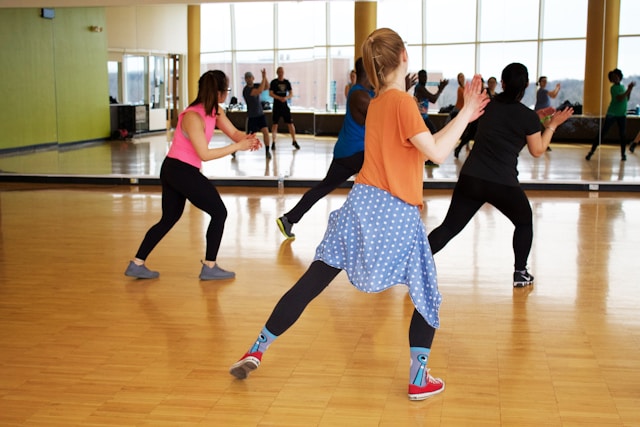Teaching / Classroom Children's Theatre
Top Tips on Teaching Musical Theatre
Mychele Lebrun | April 15, 2024
Have you been entrusted to train the next generation of fabulous musical theatre performers? Lucky you! Teaching mini triple threat performers can be quite daunting, especially when you are expected to cover singing, dancing, and acting all at once for only an hour or two a week. For this exact reason, we have created a little guide to help you best navigate the do’s and don’ts of musical theatre teaching.

Structuring Your Class
Right away, you should decide how you want to divide your class workload. There are many ways to do this. If your class focuses on all three disciplines (singing, acting, and dancing), you can either divide your weekly classes to focus on one element or pepper all three into one lesson. I often find starting the term with more focused work gives the children an opportunity to grow in one element. Perhaps you spend the first week teaching them the melody (or harmonies) of a song sitting in a circle and add choreography a few weeks later, when they have everything memorised. However, with younger children (or when the choreography isn’t very complicated), I find it best to teach everything at once so the children can associate the movement to the lyrics right away. In my opinion, both teaching methods are valid, but it is helpful to decide how you will structure the class at the start of term to best manage your time with the students.

Setting a Goal
As the teacher, it is vital to understand what kind of class you are teaching. Speak to the school principal, parents, or students to set intentions for the term. Some companies focus on training young children and honing their skills above all else. These classes will require more technical based exercises, as well as your feedback as a teacher. The work might be taken more seriously as the students and their parents would expect growth throughout the term. Other schools use musical theatre training as a tool; they do not expect the children to become professional but use the drama games as a way to build confidence, communication, and character. These classes will allow for more fun and games. It is a less high stakes environment that requires less focus and goal setting.
Finding Focus at the Start of Class
It is vital to focus the children at the start of class to ensure a smooth hour of teaching. Once everyone has arrived, sit in a big circle cross-legged, and ask the children to share something from their week. This is a lovely moment to engage active listening as well as one-on-one communication. With an especially rowdy class, you could play a focus game instead (see the video below for one of the easier focus games – frogs). If you are a newer teacher, or covering the class for the day, this would also be a great time to tell the children what your expectations are as a teacher. My number one rule: don’t interrupt or speak over others. Giving the kids one rule to focus on during the class will help you keep control and remind them who is in charge.
Finish the Class with Fun
A great way to finish your class is with a fun game! No matter how the rest of the hour has gone, you want to send your students away on a positive note. This could be anything from a game of freeze dance to the more serious game of “bing-bong-name” (an elimination game requiring quick thinking and concentration). This gives your students one more opportunity to shed that extra energy before sending them back to their parents, happy and inspired by your class!
Class Participation
Find ways to include student participation during your class. Doing this keeps them engaged and invested, especially if they have something to look forward to every week. Consider choosing a special student to help lead the physical warm up each week. For one song, they can decide what kind of fitness everyone does; be it jumping jacks, running on the spot, or their favourite dance step. I was surprised at how many kids under 10 defaulted to disco moves! Another choice is to pick someone who has well behaved at the end of class to take home a sticker, stuffed animal, or hat. Something the children now see as a reward if they’ve had a great class. Years ago, I taught with a company who told a continuous story for the last ten minutes of every class throughout the term. We would choose a different child every week to play the main character and lead the adventures.
Same Game, Different Ages
Though you might be teaching a variety of ages throughout the week, don’t be afraid to use the same material throughout all your classes. A lot of the games for younger students can be adapted for tweens or teens pretty easily by adjusting the pace or rules of the game. For example, SPLAT is a great focus game that has many variations. For the younger kids, break it down to its simplest form; the person in the middle of the circle points to someone, and the two kids on either side must splat each other while the person who was pointed to crouches down. For the older kids, add categories. Not only do the two people on either side need to splat each other, they also need to name something in the category that has been assigned. So, if the person in the middle of the circle says “country”, the other two must quickly point and yell out a country name while the pointed person crouches out of the way. If this game still feels unclear, watch the video below for a more visual explanation. Using different versions of the same games will help you fill the time and allow for more variety throughout your teaching term.
Memorization Tools
It can be difficult to teach lyrics during a class without sheet music, especially when working with younger children who can’t yet read (or will lose the handouts by the end of class!). In these instances, the magic microphone is a great way to help younger students memorise songs right then and there in the classroom. Break down the song week by week. Use the first week to teach the first verse, then the chorus on week two, second verse on week three etc. Use the invisible microphone in three different stages. In stage one, sing the song line by line, and have the students repeat after you as you go. The second stage uses the same technique, but two lines at a time. Finally, stage three uses the microphone more spontaneously, so the students must fill in the blanks to any missing words in the song. By repeating this process every week, the kids will pick up the lyrics quickly and be memorised in no time!
For more inspiration check out our blog post on 10 Theatre Games and Warm-Up Exercises for Kids!
Last Updated: April 15, 2024
Canadian music theatre artist currently based in London, England.
